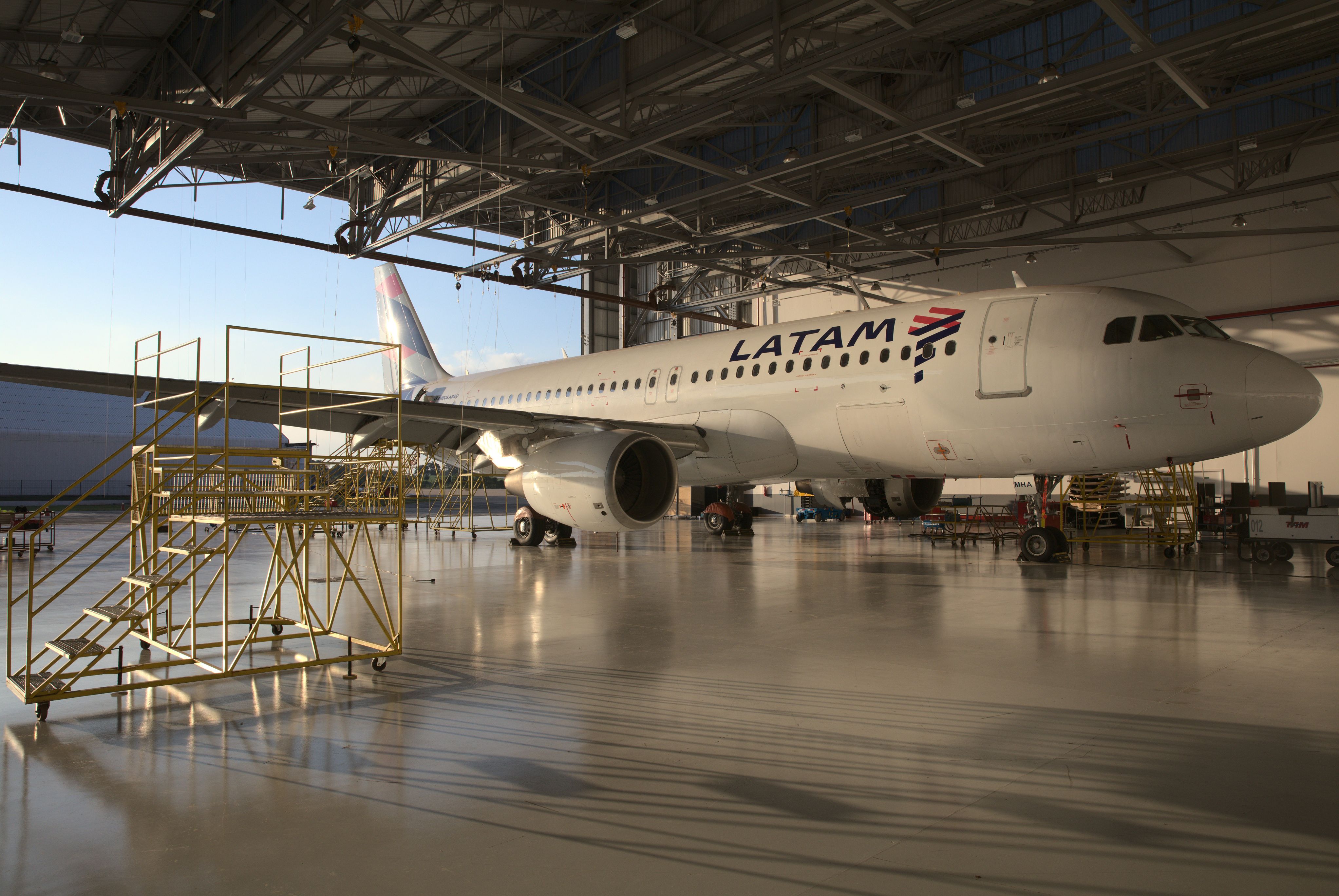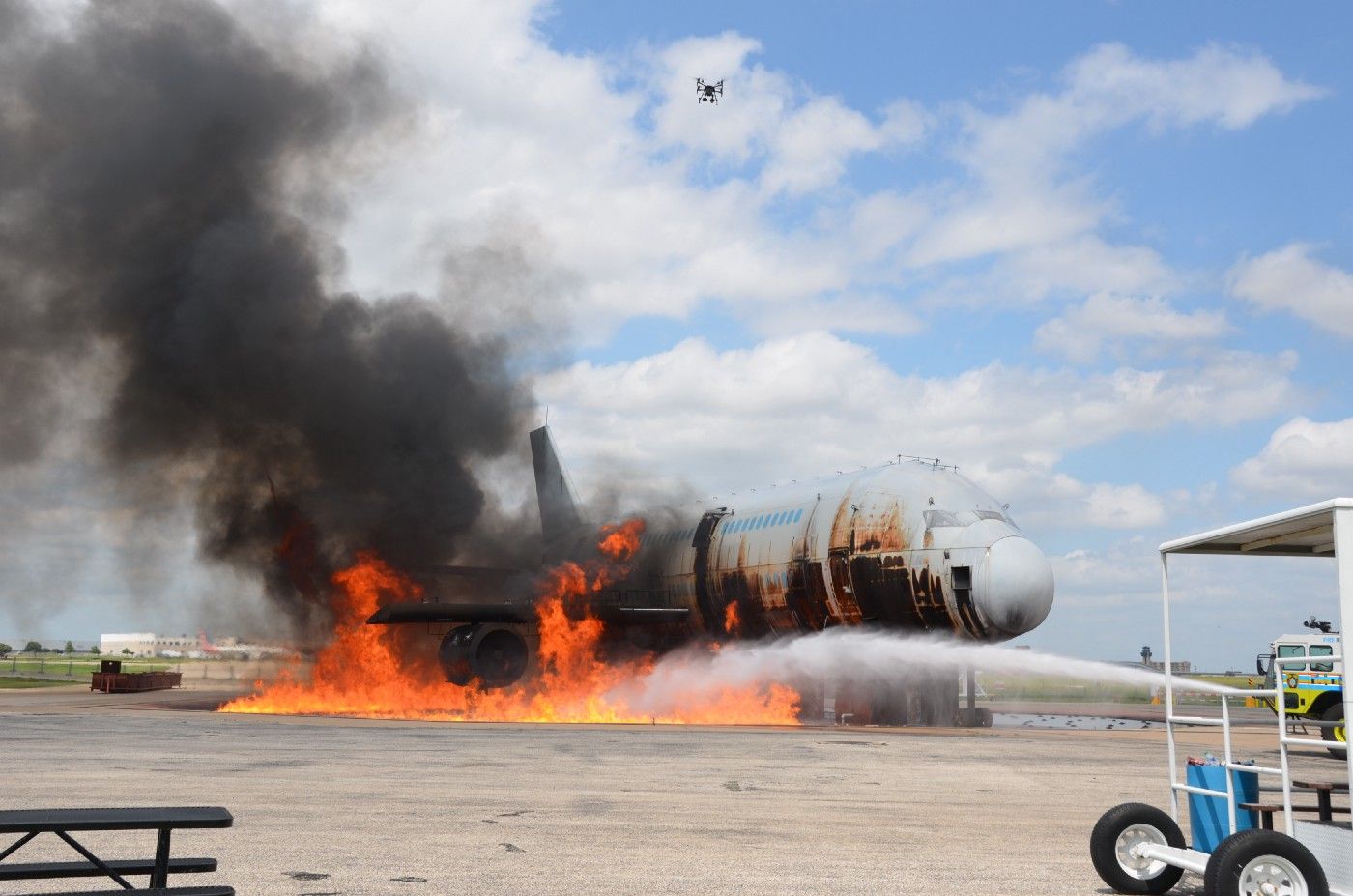LATAM Airlines Group is employing drones to inspect aircraft fuselages at its Maintenance, Repair, and Overhaul (MRO) facilities in São Carlos, Brazil. By using this new technology, the South American airline is making the maintenance process faster and better. Let’s investigate further.
Maintenance drones
Doing maintenance check-ups is something all airlines have to do worldwide. The largest airlines like LATAM invest in building their own MROs to increase efficiency in-house and reduce costs.
For example, one of LATAM’s Brazil rivals, Azul, has saved about US$40 million in the last two years by doing maintenance and repairs in-house. You can read Simple Flying’s tour of Azul’s hangar here.
LATAM has its MRO located in São Carlos, Brazil. This is where the airline has been refurbishing its narrowbody fleet, composed of Airbus A320 and Airbus A321 aircraft.
Earlier this week, Jerome Cadier, CEO of LATAM Airlines Brazil, released a video showing how the airline does maintenance checkups by using drones.
This video shows a small drone flying around an Airbus A319 with a special livery promoting the Rock in Rio 2022 music festival. The drone can be seen taking photographs of the fuselage.
How does it help?
Drone technology is able to help in many areas of the economy. For example, users can employ drones to do maintenance flights in remote areas. In the case of the airline industry, drones can heavily reduce the time a company uses to do routine checkups.
Jerome Cadier said,
“A new wonder from our MRO: drone inspection! We always check every detail of the fuselage of our aircraft. Now look at the impact technology can have: now, we can do these maintenance checks with the help of a drone.”
The drone automatically flies around the aircraft and takes around 2,000 detailed photos of the entire fuselage, which can later be analyzed. LATAM also keeps a digital archive of the plane.
More importantly, using drones save time. Cadier added,
“The work that two employees would have done in eight hours, using a platform, is now done in around 40 minutes (plus another hour to do the technical analysis."
Other uses for drones
Drones, airlines, and airports are usually a bad combination. We have seen incidents worldwide of drones flying nearby airports and shutting them down.
Nonetheless, drones can be a very effective tool to improve many processes in the airline industry. For example, the Federal Aviation Administration (FAA) used a drone as part of a simulated exercise last year.
The FAA simulated the response to an Airbus A380 accident and fire on a taxiway at Dallas Fort Worth International Airport.
In the past, the airport’s aircraft rescue and firefighting responders (ARFF) could view an aircraft accident only from the ground, missing an important perspective. Now, the ARFF has a new vantage point by using drones hovering over the scene.
The imagery provided by the drones gives better situational awareness. Brian McKinney, DFW’s fire chief, said having drones that can be deployed for incidents can be a massive benefit to the industry. “In an industry where every second counts, drones can be an integral part of any response.”
Do you think drones could have more uses for helping the airline industry? Let us know in the comments below.


